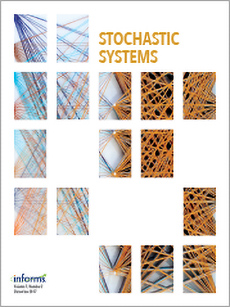Abstract
We consider an inventory system in which inventory level fluctuates as a Brownian motion in the absence of control. The inventory continuously accumulates cost at a rate that is a general convex function of the inventory level, which can be negative when there is a backlog. At any time, the inventory level can be adjusted by a positive or negative amount, which incurs a fixed positive cost and a proportional cost. The challenge is to find an adjustment policy that balances the inventory cost and adjustment cost to minimize the expected total discounted cost. We provide a tutorial on using a three-step lower-bound approach to solving the optimal control problem under a discounted cost criterion. In addition, we prove that a four-parameter control band policy is optimal among all feasible policies. A key step is the constructive proof of the existence of a unique solution to the free boundary problem. The proof leads naturally to an algorithm to compute the four parameters of the optimal control band policy.
Citation
J. G. Dai. Dacheng Yao. "Brownian inventory models with convex holding cost, Part 2: Discount-optimal controls." Stoch. Syst. 3 (2) 500 - 573, 2013. https://doi.org/10.1214/11-SSY046
Information





